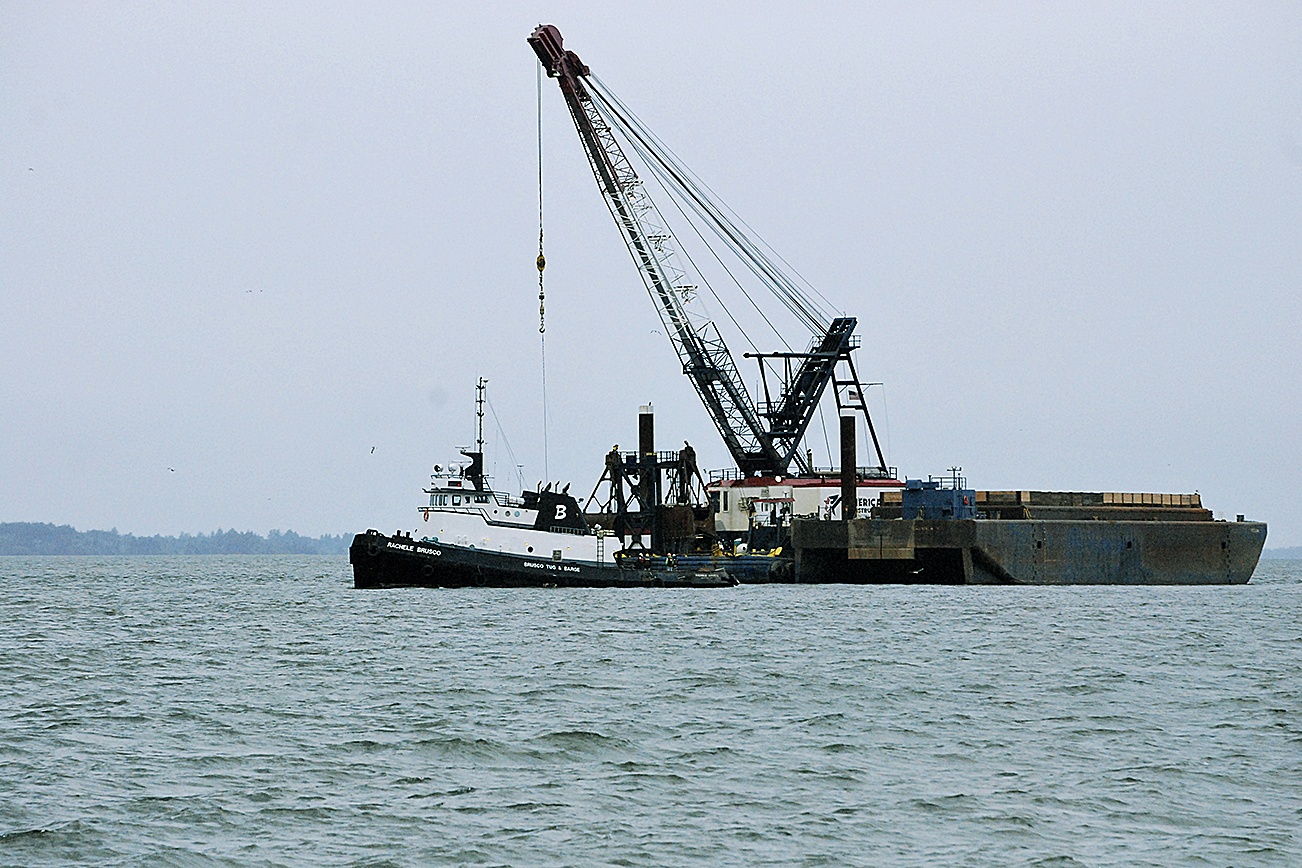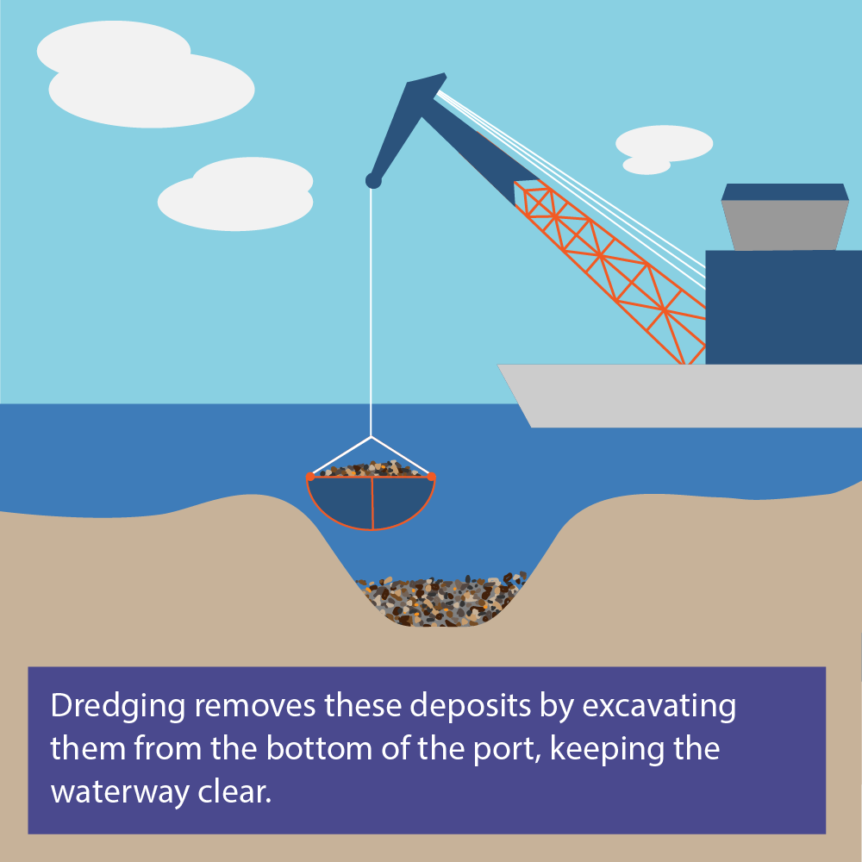

Continuous maintenance dredging often takes place where navigation channels to ports have high sedimentation rates, such as in estuaries. Changes in community structure are restricted to within 5 km of the dumpsite. Dumping sediments on the seabed may smother and crush organisms living on the seafloor and may cause changes in benthic habitats and biological communities.

Increased turbidity may also lead to short-lived effects on organisms that are light-dependent, but these are generally considered to be negligible. Sediments are part of the marine environment and relocation of non-contaminated sediments to the sea supports the natural processes of the sediment balance. Knowledge about the effects of dredged material disposal on the wider environment is mainly from studies at individual dumpsites and from EIAs. Nutrients released from dumped dredge spoil may contribute to eutrophication, but this will generally be of minor significance. A further decrease in TBT concentrations is likely following the global ban on TBT-based anti-foulants. In the Netherlands, TBT concentrations in dredged material have fallen since monitoring began in 1998. There was a clear fall in contaminant concentrations in dredged material from the southern North Sea throughout the 1990s. Contaminants in dredged material are monitored and assessed against action levels to help reduce pollution at dumpsites. This can lead to increased availability of contaminants to the food chain. One of the main concerns over dumping and dredging is the release of contaminants to the water column (such as heavy metals and TBT), which is associated with temporary increases in turbidity. Top Environmental impacts of dumping and dredging The most frequent reasons for beneficial use are beach nourishment and sediment recharge. The amounts for 2013 (28 million tonnes) and 2014 (37 million tonnes) are comparable for both years beneficial use was implemented at approximately 80 sites. This short period does not allow for trend analysis. These values are almost identical to those reported for mercury in the previous assessment period 2003–2007 (0.18–0.22 mg/kg).įigure 2: Annual average calculated mercury concentration (mg/kg, dw) in dredged material deposited in the OSPAR Maritime Areaīeneficial use of dredged material (such as for beach nourishment and sediment recharge) has been monitored by OSPAR since 2013. Annual average mercury concentration varied between 0.17 and 0.23 mg/kg. Although yearly fluctuations can be seen, there do not appear to be any meaningful increases or decreases across the entire assessment period. The calculated average concentrations, in mg/kg, dry weight (dw), for the trace metals are comparable to those described in the OSPAR Quality Status Report 2010. Changes in total dredging quantities and total contaminant loads are dependent on external factors, including variation in sediment siltation rates due to storm events. Total amounts, in million tonnes, of dredged material deposited in the OSPAR Maritime Area per country over the period 2008–2014Īverage contaminant concentrations and total loads per country were calculated for cadmium, mercury, lead and tributyltin (TBT) for the period 2008–2014. This value includes material from capital and maintenance dredging. Over one thousand million tonnes of dredged material were deposited in the OSPAR Maritime Area during this time. The most recent assessment of dredged material, for the period 2008–2014, was undertaken as part of OSPAR’s 2017 Intermediate Assessment of the state of the Marine Environment of the North-East Atlantic.

Trends in dumping and dredging Environmental impacts of dumping and dredging Management and regulation Trends in dumping and dredging


 0 kommentar(er)
0 kommentar(er)
